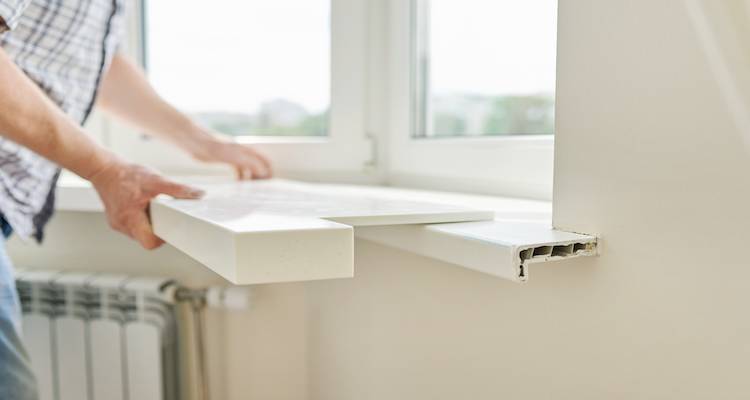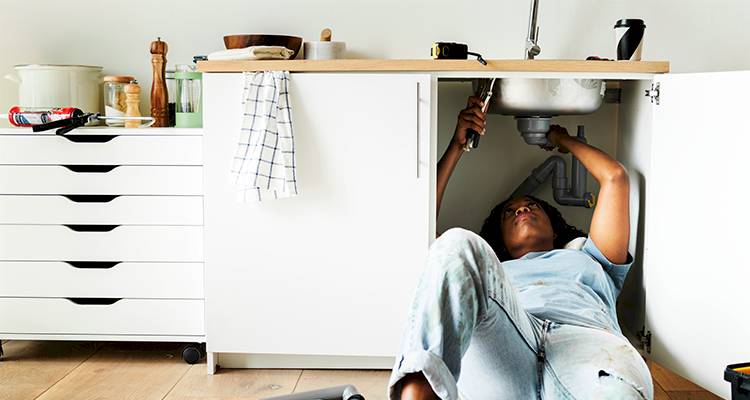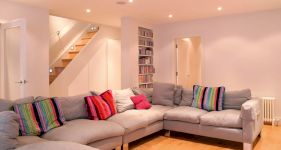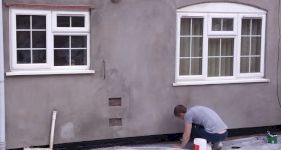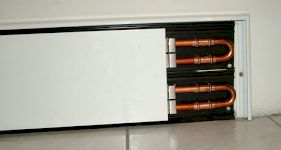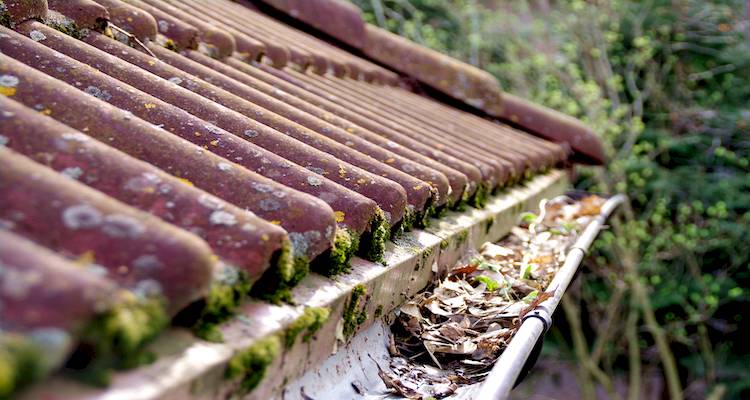Wall Panelling Cost
In this guide, we’ll explore all you need to know about wall panelling costs, including the different types and styles of panels available and the price to fit them.
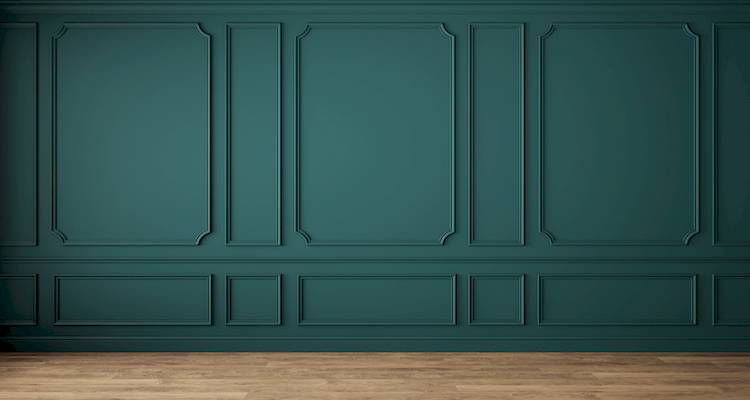
£425
Table of Contents
- How Much Does Wall Panelling Cost?
- Supply Only Costs
- Additional Costs
- Labour Costs and Timescales
- Cost Factors of Installing Wall Panelling
- What's Involved in Installing Wall Panelling?
- Can I Install Wall Panelling Myself?
- Types of Wall Panelling
- Hiring Contractors for Wall Panelling Installation Checklist
- FAQs
- Sources
How Much Does Wall Panelling Cost?
If you’re thinking of refreshing your home but have a limited budget, you may fancy installing wall panelling. But exactly how much does wall panelling cost? Is it cheap or expensive to do? Well, that does depend on a few different factors, including panel type, the size of area to be covered, and where you live.
There are wall panels such as tongue and groove, that are made from boards that sit side-by-side. And those that form a grid-like framework with an open back, such as shaker-style panels. This means some use more materials per square metre than others.
A simple installation of shaker panels could cost between £115 and £765 per wall, whereas an installation of tongue and groove panelling could cost between £130 and £510 per wall.
The cost of installing wall panelling may also be determined by what materials they’re made from. MDF wall panels tend to be the cheapest option, with panels costing from £15 per square metre. Whereas wood panelling costs anywhere between £20 and £80 per square metre.
Pine tends to be the cheaper option and oak the most expensive. Plus, wall panels can come in kits or be custom made. Kit versions take less time to fit but can cost more per square metre to buy.
The cost of wall panelling is also dependent on the area you intend to cover. Panels can cover a whole wall or half a wall. Or simply come a third of the way up the wall, which is known as wainscoting. And how many walls you intend to cover will also affect the total price.
But it isn’t just the area inside your home that can change what you pay. Where your home is situated can also affect the cost, with the cost of skilled tradespeople often much higher in London.
Unless you’re installing your panelling as a DIY project, you’re likely to need the help of a carpenter or joiner and a decorator. The average day rate for a joiner or carpenter is £210 and £175 for a painter.
Wall Panelling Prices
The average cost of panelling for walls depends on the style and materials used, as well as the size of the area you’re having panelled. Here’s the average cost including materials and labour:
| Type of wall panelling | Price per m² | Average price for wainscoting a single wall | Average price for a whole wall (8.5m²) |
|---|---|---|---|
| Oak Shaker | £90 | £255 | £765 |
| Pine Shaker | £50 | £140 | £425 |
| MDF Shaker | £40 | £115 | £340 |
| Decorative Moulding | £30 | £85 | £250 |
| Pine Tongue & Groove or Shiplap | £60 | £170 | £510 |
| MDF Tongue & Groove or Shiplap | £45 | £130 | £380 |
| Composite Tongue & Groove or Shiplap | £70 | £200 | £595 |
| Pine Slats | £40 | £115 | £340 |
| Oak Slats | £160 | £450 | £1,360 |
Supply Only Costs
Below is a list of the supply costs for the different types of wall panelling:
| Type of wall panelling | Price per m² |
|---|---|
| Oak Shaker | £60 - £80 |
| Pine Shaker | £20 - £40 |
| MDF Shaker | £15 - £25 |
| Decorative Moulding | £10 - £20 |
| Pine Tongue & Groove or Shiplap | £30 - £50 |
| MDF Tongue & Groove or Shiplap | £20 - £30 |
| Composite Tongue & Groove or Shiplap | £40 - £60 |
| Pine Slats | £15 - £25 |
| Oak Slats | £120 - £140 |
Additional Costs
Of course, when you’re installing wall panelling in your home, there may a few other costs to consider.
Plastering the Wall
Panelling needs a solid and straight wall to sit on. So, if your wall is currently in a poor state, it may need some plaster work carrying out. A small patch repair is likely to add between £70 and £130 to your costs, while reskimming the walls of a room costs from £150.
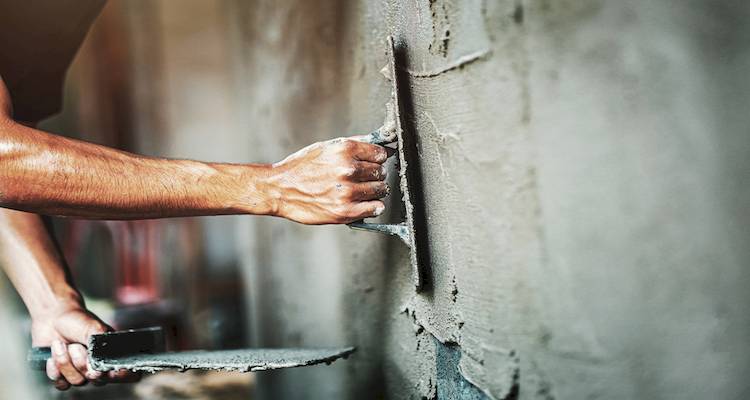
Should you discover the plaster on your walls has blown or is crumbling away, you may need to completely replaster the room. In this case, you’re looking at costs starting from £400 to complete the work.
Moving a Radiator
If there’s a radiator on the wall you wish to panel, then you may need to move it temporarily, or permanently if it interferes with the look of your panelling.
Thankfully, moving a radiator shouldn’t take more than a few hours to do but it will add around £150 to your costs.
Floorboard Repair Cost
While you’re creating your new look walls, you ideally want everything around it to look good too. Otherwise, the effect could be lost.
If you’re going for a natural, Scandi or traditional feel, then you may be thinking of ripping up the carpet to reveal the floorboards. However, floorboards that have been hidden for a while could need a bit of TLC to bring the best out in them.
Floorboard repair costs do vary depending on the amount of work that needs doing. You could be looking at just a few hours of work or a few days. So, costs can be anywhere between £200 and £300.
Replacing Skirting Boards
As you’re having your walls renewed with panels, the skirting may need a bit of attention too. Especially if this is going to be the base for your panelling. Or you may simply want to change the style of your skirting to fit the type of panelling you’re having installed.
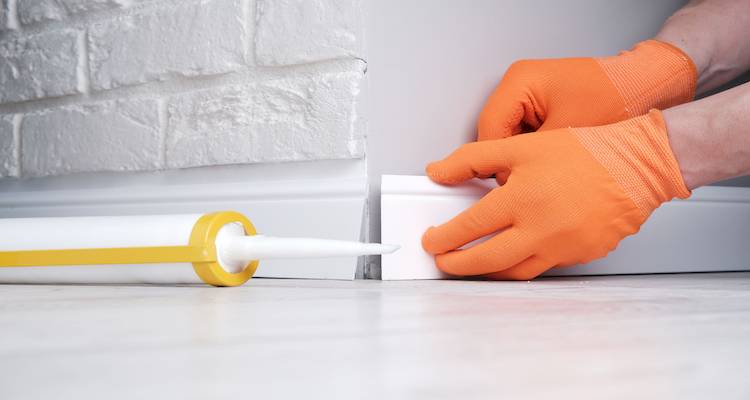
Replacing the skirting boards may cost you an additional £250, but it can be done by the carpenter or joiner who is fitting your panels.
Painting the Room
Whether or not you decide to have your panels painted, it’s likely that you’ll want a fresh coat of paint on the rest of the room. This will get rid of any marks or mess from the panel installation and ensure the whole room is looking as good as your new panels.
The average cost to paint a room is £400 including the prep work, paint and labour costs. But it shouldn’t take longer than one or two days to complete.
Labour Costs and Timescales
How long it takes to install your wall panelling and how much it costs in labour depends on a few different factors. So, let’s take a look at the labour costs and timescales.
If your walls are in good condition and ready to be panelled, then you may just need a carpenter or joiner to come in and fit the panels for you. You can expect to pay between £20 and £40 per hour and the job may take about a day to complete a small area.
Of course, the job may not be quite so simple and that will increase the timescale and therefore the cost. For example, there may be a bit of wall prep to do first. The walls may require a bit of sanding and filling to get the wall smooth, which a decorator can do for you.
You may also want the decorator to apply a few coats of paint to the panels too. This could take a day in total, depending on how big the job is. And you can expect a painter to charge between £15 and £30 per hour.
So, how much you end up paying for labour does depend on how many hours your tradespeople take to complete the job. But where you are located does have an affect too. If you live in London, you may find prices are a little higher than the national average.
Cost Factors of Installing Wall Panelling
There are a number of cost factors to consider when adding wall panelling to a room.
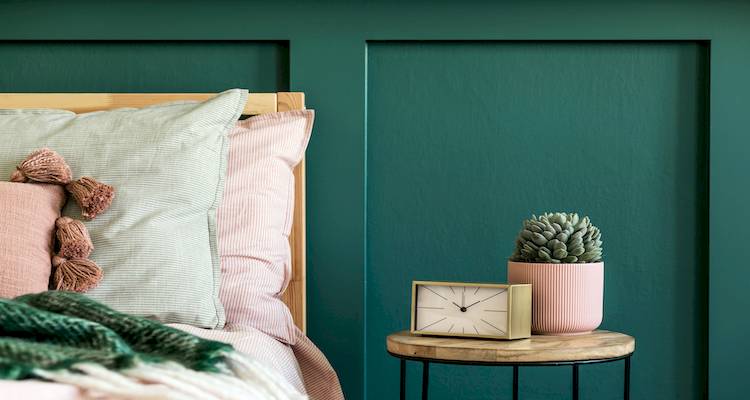
Number and Length of Walls
The size of the area you would like panelling is the first cost factor. The bigger the area, the more materials you’ll need and the more time it will take to complete. For example, panelling a small hallway is going to be much cheaper than panelling the walls throughout the house.
Height of Panelling
Whether you’re covering a whole wall or just having panels that come part way up the wall does make a difference to the cost.
Panels known as wainscoting typically only come a third of the way up the wall. So, this type will take the least time and materials to do, making it much less expensive than floor to ceiling installations.
Type of Panelling
The type of panelling you install is another factor that will affect your cost. If your panels come in a kit or as ready-made sections, you will pay a bit more for this convenience.
And if your panel type is one that completely covers the wall such as shiplap or tongue and groove then it’s likely to cost a bit more due to the amount of materials required.
Type of Materials
The type of materials you use will also impact the cost of installing wall panelling. It’s usually cheaper to use MDF panelling than wooden wall panels. But the different types of wood differ in price too.
Pine is generally the cheapest wood option to lay, and oak is often the most expensive option. You may decide on a composite material for easy cleaning and durability, but this can be more expensive than MDF and pine versions.
Complexity of the Installation
How complex the installation is, could also affect the cost. Panelling that lines a stairwell for example is much trickier to install because it needs to run at an angle and involves more skill to measure and cut the materials to fit.
Also, if you’re panelling a room such as a bathroom, it can take longer due to working in a confined space. Sinks and toilets may need to be removed to panel behind them and they then need to be replaced.
What's Involved in Installing Wall Panelling?
There are a few steps to go through when installing wall panelling, which can vary a bit depending on what type of panelling you're having.
Working out the Design
If you’re installing shaker-style panels or panels made from decorative moulding, then a design may need to be sketched out first. Working with your trades, you can come up with a design you like.
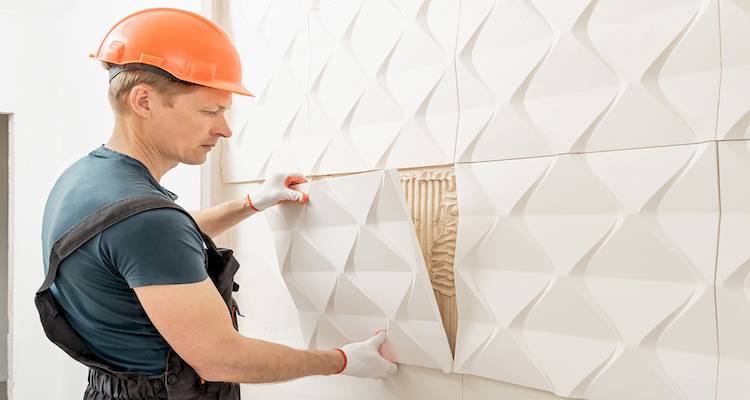
This will need to work with the shape of the room and any structural features. Once this is decided, measurements can be taken and materials ordered.
Prepping the Wall
The first step to creating your wall panelling is getting the walls prepared properly. There may be old wallpaper to remove first, plus holes to patch and cracks to fill. The wall needs to be free from lumps and bumps, so it could need a light sand.
If you’re planning on having an open framework such as shaker style panels or panels made from decorative moulding, then the wall may be painted first, so you start with a blank canvas.
Measuring and Cutting
Panelling is often made from strips of wood or MDF that are attached to the wall. So, these need to be measured out and cut to size. The cut sides may need a light sand to remove any rough edges and make everything fit together neatly.
For some wall cladding materials such as traditional tongue and groove, batons are fixed on the wall first. So, this may be the next step.
Attaching the Panels
Now, it’s time for the panels to be attached to the wall. There are a few different ways of doing this. MDF strips and boards are fairly light, so they may be glued on, but wood panels are often glued and pinned or nailed.
If your panels are only going part way up your wall, then a dado rail or decorative trim may be added too.
Sanding and Caulking
Once all the strips or boards are attached and the glue is dry, the edges may need caulking to fill any gaps and create a seamless finish. A caulking gun is used to do this, as it’s easy to run along the joins.
Depending on what materials your panels are made from, they might be given a light sand to create a smooth surface for painting on.
Painting and Other Finishes
The final stage of installing your wall panelling is adding paint, oil or varnish. This will give it a protective coat and improve the look. Wood and MDF panels can both be painted but need priming first, so the paint adheres properly. A decorator may be called in to do this.
If your panels are made from a high-quality material such as oak, you may simply wish to add a clear and protective coat of varnish, oil or stain to the wood. You carpenter or joiner should be able to advise you on which will be best for your panels.
Can I Install Wall Panelling Myself?
Most types of wall panelling can be installed by a competent DIY enthusiast. And doing it yourself will save you money on materials. However, you will need to make sure you have the right tools to be able to complete the job properly. If you don’t already own all the tools needed, then you’ll have the added expense of buying or hiring them.

You’ll also need to be good at measuring and cutting. Some wall areas may require you to work around structural features such as staircases and bends, which takes more skill to get right.
Although installing wood panelling is easy enough to do as a DIY project, there are some dangers you need to be aware of. If you’re attaching your wall panelling using panel pins or nails, then you’ll need to check where pipes and electrical wires run first.
You can do this with a handheld detector but if you have any doubts, it’s best to hire a professional. You will also need to take care if you’re using power tools such as chop saws and nail guns. And wearing protective goggles and a mask when you're doing any cutting or sanding is essential.
Types of Wall Panelling
There are lots of different types of wall panels you can install in your home. They come in a variety of styles and materials, which does have an impact on the cost. If you’re looking for some wall panelling ideas, here’s a run down of the main types:
Shaker Wall Panelling
Shaker style panelling is very popular and can be made from either wood or MDF. The design uses a grid of squares which can cover a whole wall or just part of it.
This style is popular because it’s easy to install and is a cost-effective way to refurbish a room. It works in both period and new-build properties and can be painted in any colour you like. Unless you’re going with oak panels though, they do need to be painted.
Decorative Moulding
Adding panels made with decorative moulding is a quick and easy way to give your walls a period-style makeover. Mouldings can be used to create square or rectangle panels, so they fit any size of wall. It requires minimal materials to install this type of panelling, so it’s good for people on a tight budget. It works best in period properties but can be painted any colour.
Tongue & Groove Panelling
Tongue and groove wall panelling has been around for decades and is made from interlocking boards. In the past you could only buy a wood version, you can now buy it in pine, MDF and composite materials.
It comes as a kit or as individual boards. Composite tongue and groove panelling is ideal for high-traffic areas and moisture-prone rooms. This makes it a good choice for hallways and bathrooms.
Shiplap
Shiplap has interlocking boards in the same way as tongue and groove panelling does. However, the boards are recessed along one edge. You can see this style on sheds and weatherboarding too. It works best laid horizontally and covering a whole wall rather than just part way up. This style takes a bit more skill to install but works well with Scandi and coastal interior designs.
Wooden Slats
Slat wall panelling is where long lengths of wood are attached vertically to the wall with a small gap in-between each one. It’s a modern take on traditional panelling, so it works best in newer homes.
Wooden slats can be made from pine, oak or other types of timber to add texture and character to walls. They can be left unpainted, but a coat of oil or varnish is recommended to protect them.
Hiring Contractors for Wall Panelling Installation Checklist
- Do shop around and get as many different quote as possible for the panelling work.
- Be clear about what you want, so the quotes are accurate.
- Ask for detailed quotes, so you can see what everything costs and check all the work you want doing is included.
- Check out the company or tradesperson first before agreeing to anything.
- Don’t be afraid to ask tradespeople for their qualifications or examples of past work.
- Ask when they’re available to start to there are no surprises. And ask how long they expect it to take, so you’re prepared for living around the upheaval.
FAQs
What wood do you use for wall panelling?
How do you measure correctly for wall panelling?
What is the best way to fix panels to walls?
Which paint should I use on my wall panelling?
Whether you choose a glossy or matt paint, or light or dark colour is up to you. Just be sure it’s suitable for the material you’re painting it on.
How to clean wood panelling?
Sources
https://www.diy.com/ideas--advice/building--hardware/timber--joinery/transform-your-space-with-wall-panelling
https://www.homebase.co.uk/ideas-advice/diy/walls/how-to-panel-a-wall/
https://historicengland.org.uk/advice/your-home/making-changes-your-property/permission/

